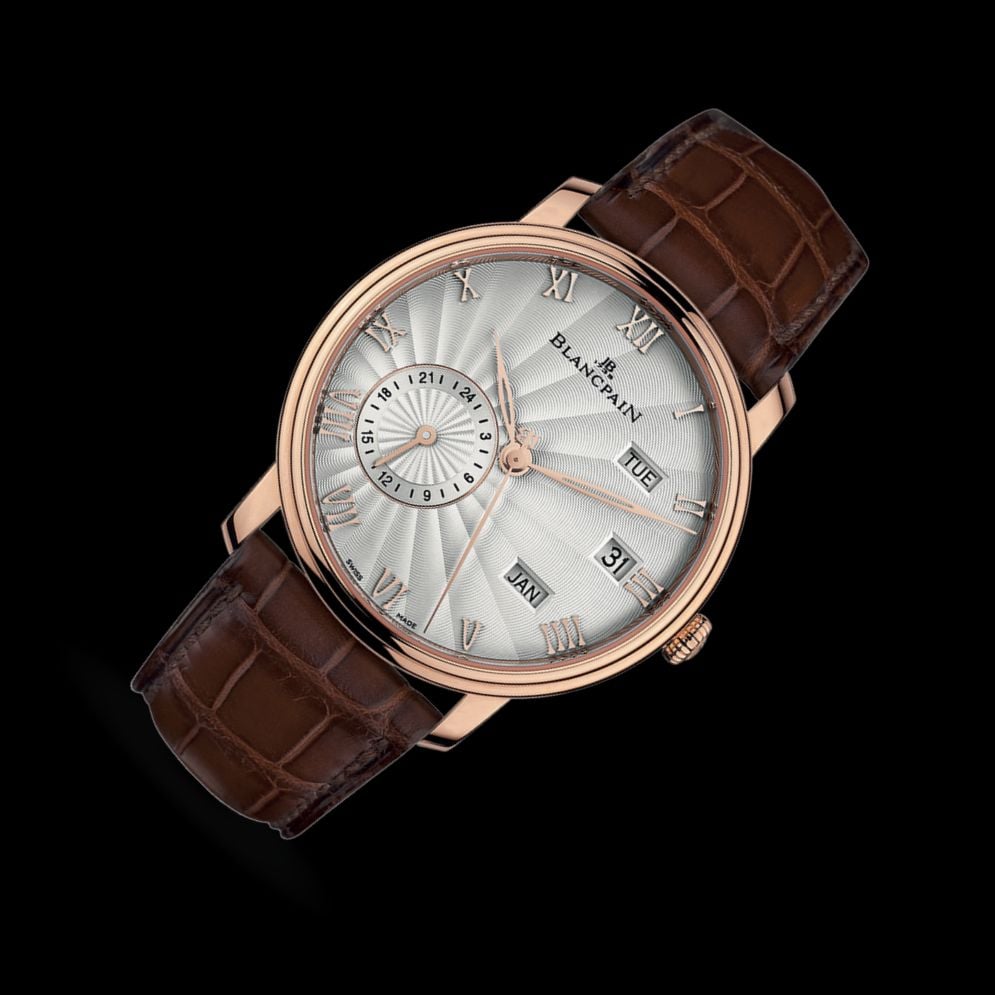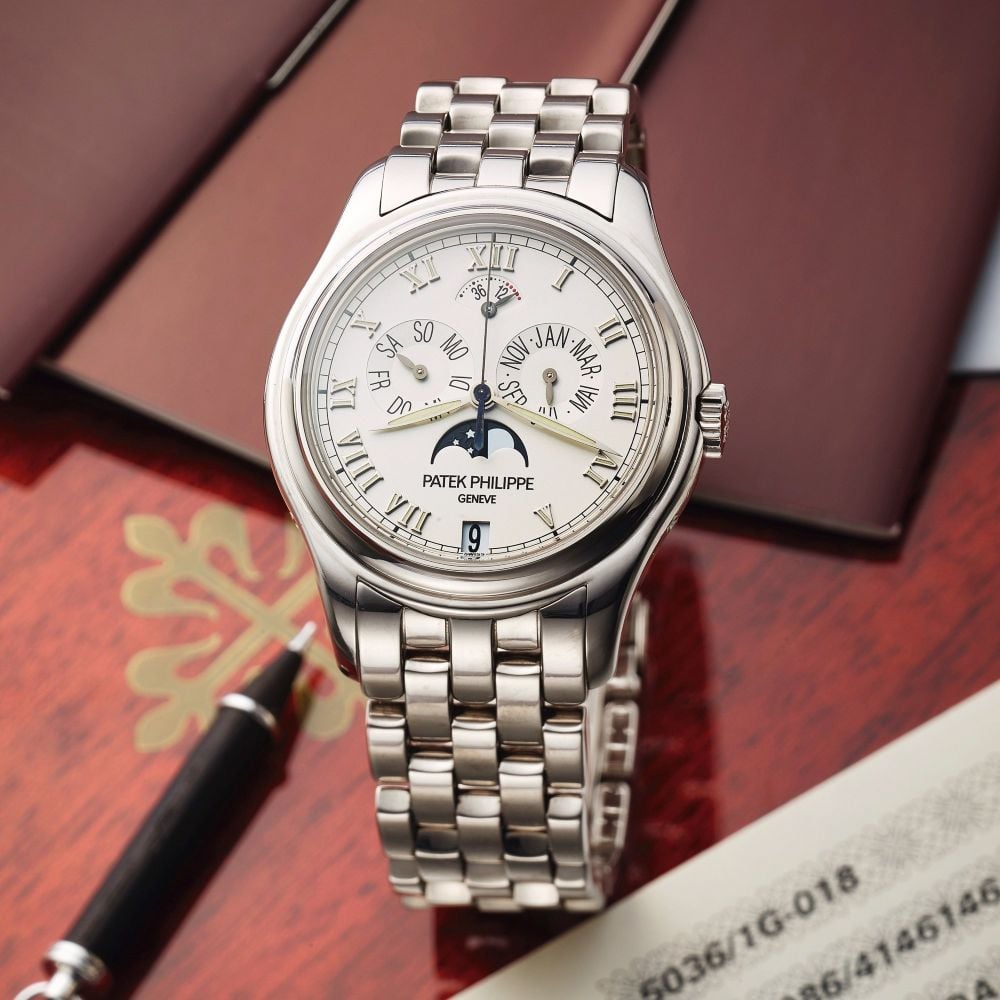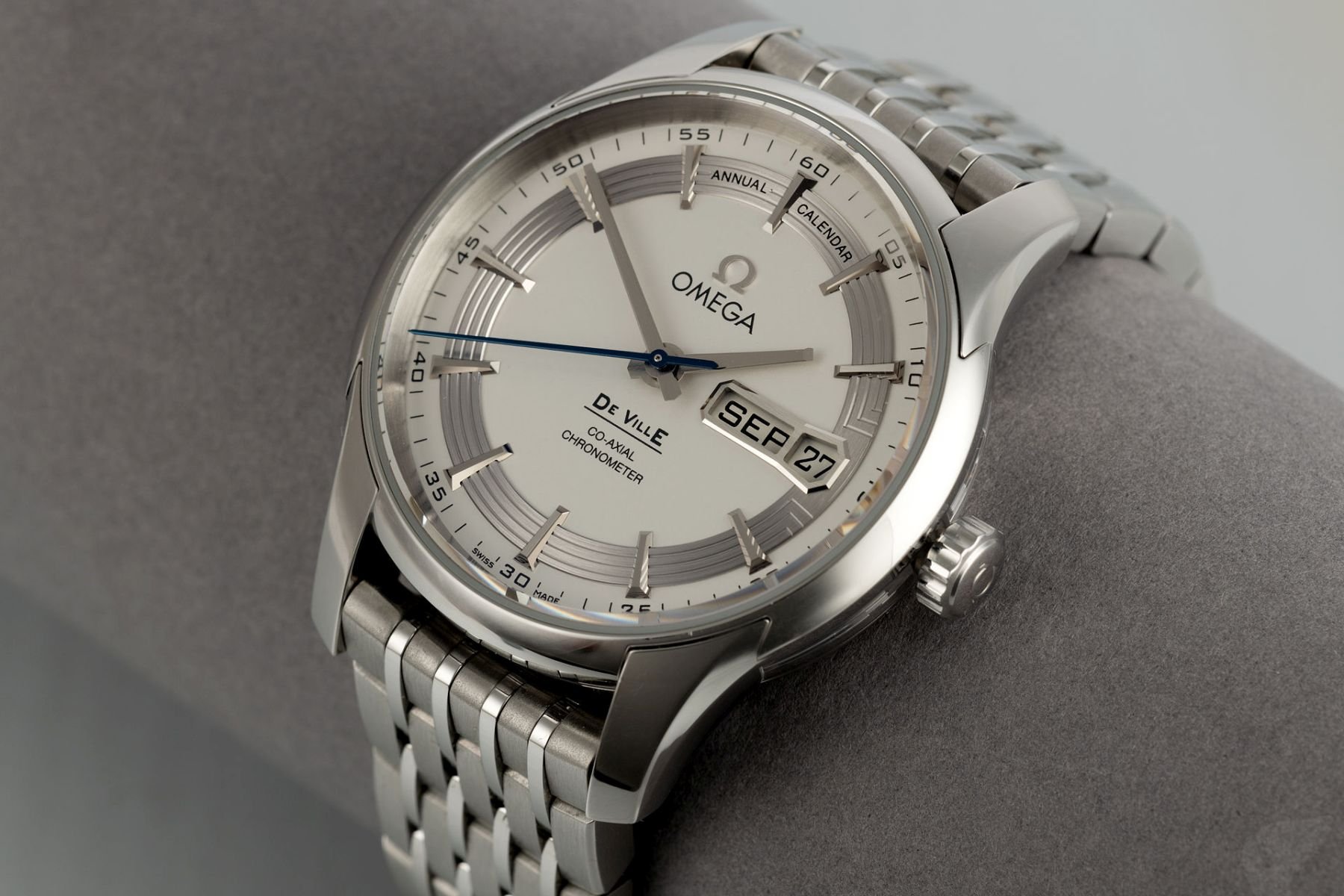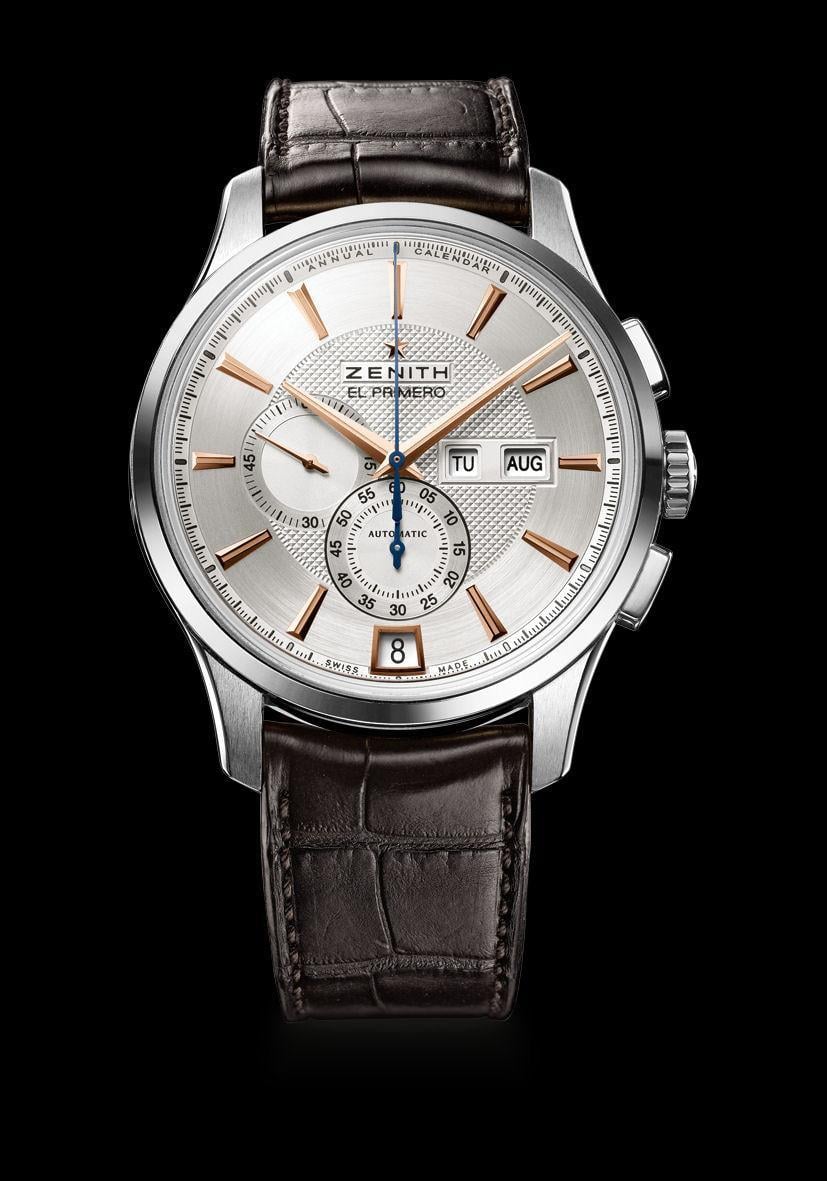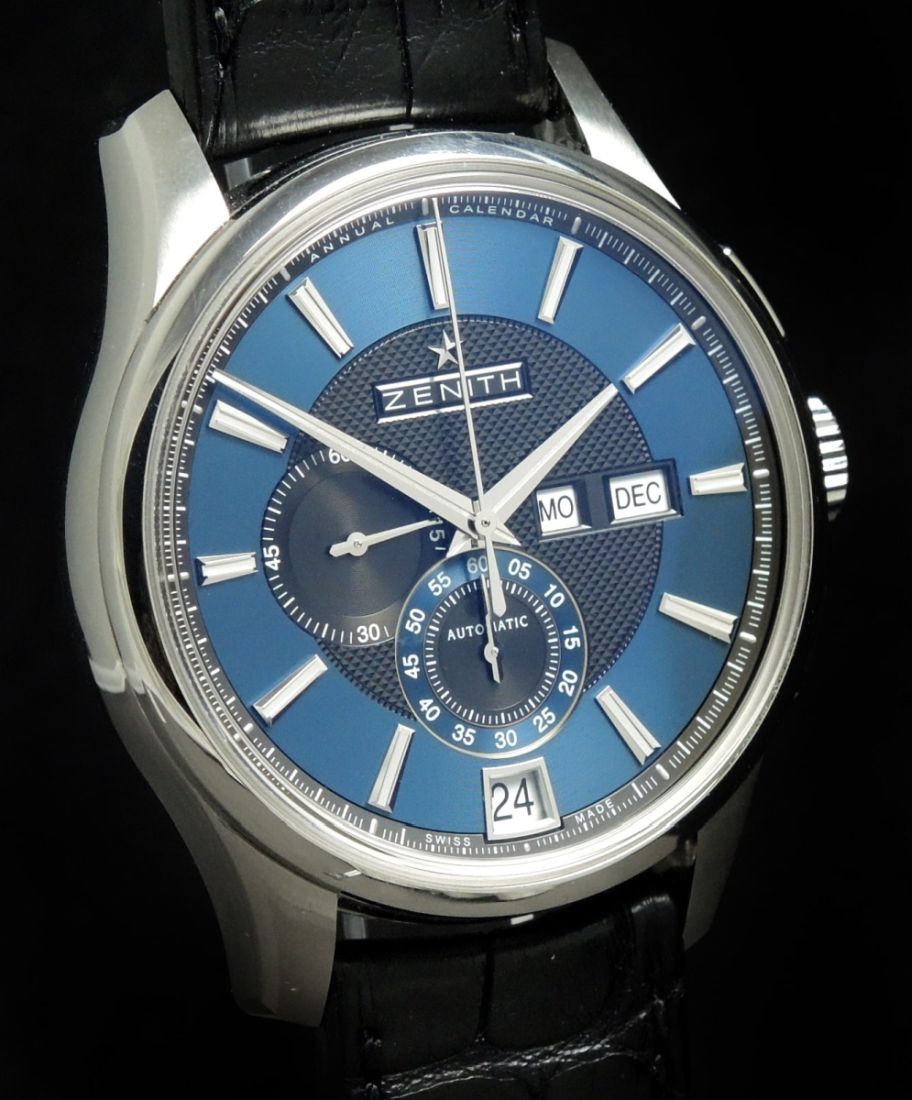How Watches Work: Why The Annual Calendar Is One Of Watchmaking’s Finest Complications
When it comes to practical complications, it’s difficult to argue against the everyday usefulness of the calendar. Sure, complications like the minute repeater or rattrapante are romantic, awe-inspiring displays of watchmaking prowess. But are their functions of any real consequence to most of our daily lives? Likely not. The calendar, on the other hand, affects us all whether we like it or not. Without the ability to keep track of the day, date, month, and year, our modern societies would collapse. From the humble and economical date complication to the regal perpetual calendar, these complications offer some of the most useful timekeeping information outside of hours, minutes, and seconds. Today, I’d like to take a moment to appreciate one of the calendar genre’s unsung heroes, the annual calendar.
This complication often gets overlooked in favor of its “big brother,” the perpetual calendar. The latter is certainly not undeserving of said recognition. It is indeed the calendar complication that does the most work for the least amount of user effort. Until the last decade, however, acquiring one of these horological gems was always a venture to the tune of tens of thousands of Euros. Not only that, perpetual calendars have a reputation for their extremely delicate internal construction. But what if you could have a mechanical complication that did only slightly less work than the perpetual, but with greater mechanical reliability, and at a fraction of the price? Well, with the annual calendar, you can!
How the annual calendar came to be
The annual calendar is actually a fairly recent invention. It came to market just 25 years ago by the hand of Patek Philippe. Long before that, however, the brand had already built its reputation as an industry leader when it comes to perpetual calendars. In 1925, Patek Philippe debuted the first perpetual calendar wristwatch — the reference 97975. It was truly a magnificent complication. Like the simpler complete calendar, it displayed the date, day, month, and moon phase. In addition, it not only accounted for the shorter month of February but also for leap years. If kept wound, it required manual correction only three times every four centuries, when the Gregorian calendar skips leap years. The complication relied on a complex system of delicate levers and cams, a simplified model of which can be seen here.
In the early 1990s, however, an engineering student from the University of Lausanne designed a more robust calendar mechanism. Due to the on-off interplay between levers and cams, perpetual calendars were prone to error and easy to damage. The young man’s innovative mechanism, however, did away with these finicky components in favor of rotating gear wheels. These wheels remained in constant contact with each other. Something which greatly reduced the risk of damage caused by user error or inaccurate engagement of the components. The mechanism, dubbed “annual calendar”, went on to both win a prize and to garner the attention of Patek Philippe. The high horology legend quickly employed the young man, introducing the annual calendar in its reference 5035 in 1996. It provided most of the functionality of a perpetual calendar with only one main difference.
The distinguishing trait
The perpetual calendar could accurately calculate the number of days in February in both normal and leap years. The annual calendar could not. It could, however, properly determine the number of days in all other months. The annual calendar required manual date advancement just once each year, on March 1st. The user simply clicked the date forward three days in non-leap years and two days in leap years. This once-a-year tradeoff with the perpetual still amounted to five times less work than with standard date or triple-calendar functions, which require manual adjustment after all months with less than 31 days.
The annual calendar mechanism was added as a module onto Patek Philippe’s caliber 315 S, which became the 315 S QA (Quantième Annuel). The module contained 154 components, which was, ironically, 44 more than the brand’s perpetual calendar modules. These components, however, were both much easier to produce and more straightforward to assemble. While this original release from the brand did away with the traditional moonphase display often seen on its perpetual calendars, it offered a 24-hour indicator at six o’clock, along with month and day indicators at three and nine o’clock respectively. In 1998, Patek reintroduced the moonphase display into its annual calendars with the reference 5036. The watch’s caliber 315/199 also featured an additional power reserve indicator at 12 o’clock.
While the annual calendar was double the price of a time-only Calatrava, it was still only half the price of a perpetual calendar. It filled the price gap in the brand’s collection beautifully, attracting more budget-conscious customers who nevertheless wanted the prestige of a complicated Patek. It was the “value prop” of its day.
Why the annual calendar is awesome
As I mentioned previously, the annual calendar is so spectacular because it provides both a vast majority of the functionality of a perpetual calendar and greater mechanical reliability at a fraction of the cost. This is especially true at the lower end of the market today. While Patek Philippe held a 25-year patent on the annual calendar complication when it debuted, it was almost too specific with regards to the construction. Thus, as other brands observed the annual calendar’s growing popularity, they swooped in with alternative solutions to constructing the module. Without question, the most revolutionary of these alternatives was one developed by Ludwig Oechslin. Within a decade, the Swiss watchmaker known for his no-nonsense, simplistic approach reduced an annual calendar module from 154 to a jaw-dropping nine components.
This revolutionary development allowed other brands to capitalize on the annual calendar complication, with more economical offerings than Patek’s precious metal references. While many brands used variations of Oechslin’s module atop either in-house or ETA calibers, module-manufacturing maestro Dubois Dépraz also jumped on board, introducing annual calendar modules of its own. Through the years, brands such as A. Lange & Söhne and IWC also chose to develop their own in-house annual calendar modules in varying levels of complexity. Thanks to this competition, these days, an annual calendar can be had at a much more affordable price than 25, 15, or even five years ago.
How does a simple annual calendar module work?
Each brand that produces an annual calendar module takes its own approach, and some are extremely complex. Thus, explaining each brand’s specific take on the complication is not in the best interest of our time or our sanity. Oechslin’s solution, however, is quite approachable. Since its original debut in 2006, Oechslin has gone on to simplify the mechanism even further in his own timepieces. His module now contains only five components, bringing it into the realm of comprehensibility even for a non-watchmaker like me. As the key feature of the annual calendar is its ability to distinguish between 30- and 31-day months, indicating the day of the week is not a requirement of the complication. Thus, to make it simple, we’ll look just at how the date and month functions work in this module.
On the month disk itself, you’ll notice five teeth that are longer than the rest. These teeth represent months with less than 31 days. On these shorter months, the “collar with two fingers bonded on the movement’s hour rod” engages with the long teeth on the month disk. This causes the month disc to rotate one extra time. The month disk is linked to the date ring through the 5-tooth cog. The extra rotation of the month disc turns this cog, which then rotates the date disc one extra time. This fast-forwards the date past the nonexistent 31st and onto the 1st of the next month. Being an annual calendar, the mechanism will still require manual correction on the first of March.
To dive any further into how the more complex annual calendars mechanisms work, I would have to hand the article over to a skilled watchmaker. Nevertheless, I hope this explanation was relatively easy to understand. After all, this wouldn’t be “How Watches Work” without the how!
My favorite annual calendars
We’ve now come to the point where I’d like to share my picks for some of the coolest annual calendars on the new and pre-owned market. While there are literally dozens (if not hundreds) of options, I feel that these picks should serve as good starting points should you be on the hunt for one. I will be splitting my picks into six categories, the first of which is…
“Vintage”
I say that in quotes because I’m not sure a 25-year-old complication can really be considered vintage just yet. Nevertheless, Patek Philippe did hold the title of the only brand to produce an annual calendar for about a decade. I’d therefore be remiss not to mention my favorite from this era, the reference 5035G.
I like this particular model for its “O.G.” annual calendar status and anthracite sunburst dial. There’s something to be said for having the “first” of something. And as a 5035, it is indeed representative of the first annual calendar on the market. The watch’s 37mm case is made from 18-karat white gold. While I’m usually more of a rose gold guy, it’s the pairing with the gray dial that I feel gives this model more character than its silver or black-dialed rose gold brother, the 5035R. As an owner of a sunburst anthracite dial (albeit not a Patek), I love how it looks subdued in darker conditions, yet screams in the sunlight. A gray dial like this literally matches any outfit with which you pair it, and thus, the 5035G is a versatile and horologically significant choice. These discontinued models sell for around €25,000.
Big Brand
Omega’s De Ville line is often overlooked in favor of the more obvious Seamaster and Speedmaster choices. It’s a real shame, as the line is home to some very intriguing designs, such as the Hour Vision Annual Calendar. This watch features the complication in its most basic form, with just the month and date at three o’clock. The user can set both of these with the crown, eliminating the need for additional inset pushers like the Patek has. This particular model features the Omega-exclusive 8601 caliber.
This co-axial movement has a 55-hour power reserve with two mainspring barrels. These ensure even torque throughout the duration of the power reserve, making the watch’s timekeeping more accurate. A full balance bridge keeps the balance assembly stable, while the free-sprung balance wheel allows for super-precise rate adjustment. Its silicon hairspring is also impervious to magnetization. All around, the 8601 is an extremely robust and reliable caliber.
The case measures 41mm in diameter, 49.5mm lug to lug, and 14mm thick. A sapphire case back allows a rear view of the beautiful movement, while sapphire cutouts on the sides of the case provide an interesting profile view. I personally love the modular-looking lug design and the four rings that pass through the brilliantly faceted indices like water under a bridge. Each of the hour markers is satin-finished on top, with gleaming sloped sides. This finishing technique carries through to both the hands and the angular month/date aperture frame. Although discontinued, this model featured a variety of dial colors and strap and bracelet options. My top choice, on the bracelet and with a blue dial, can be had for under €7000.
Independent
Given Ludwig Oechslin’s contribution to the democratization of the annual calendar, I’d be a fool not to highlight his own brand, ochs und junior. As seen in the earlier diagram, his annual calendars take simplicity to the extreme. With an ETA 2824-2 movement as a base, Oechslin’s module indicates the day, date, and month with dots, visible through perforations on the dial. Not only are these watches extremely simple, but they are also entirely customizable. Through the customizer tool on his website, customers can choose between 39 and 42mm case sizes in titanium, black PVD, or sterling silver. There are between 20 and 24 color options for everything from the dial, hands, and indices to the date/day/month discs, date/day/month dots, and strap.
Both the 39 and 42mm cases have recessed lugs, which make the lug-to-lug distance literally the same as the diameter. Both cases are 100m water-resistant as well. On top of the plethora of options available in the customizer, ochs und junior is also more than happy to discuss the use of any other materials the client may desire. Each watch is, of course, built to order, with prices starting at around 8,000 CHF.
High Horology
Patek Philippe is, of course, a high-horology brand. As I chose its 5035G for my “vintage” pick, I thought I’d go with its greatest German rival, A. Lange & Söhne, for this category. My pick of Lange’s offerings is the Saxonia Annual Calendar in rose gold. The watch is a wonderful 38.5mm in diameter, 9.8mm thick, and 47.4mm lug to lug. The lugs are chiseled inward where they meet the case, giving them the somewhat modular look I appreciate so much. Rose gold hands lie atop a solid sterling silver dial with a perpetual calendar-esque sub-dial layout. Lange’s signature big date, with apertures framed in rose gold, balances everything out at 12 o’clock. The subdial at six o’clock doubles as a moonphase and small seconds indicator. Thanks to the L085.1 caliber, the thermally blued small seconds hand immediately resets to zero when the crown is pulled.
Regardless of complexity, Lange takes pride in providing the same level of hand-finishing for all of its movements. The decoration on the L085.1 certainly does not disappoint. “Glashütte stripes”, perlage, beveled edges, blued screws, and an elegantly engraved balance cock give you plenty to ogle. The 21-karat gold 3/4-size rotor, though, is the element I find the most visually intriguing. It features both satin and hammered finishes and a platinum weight along its outside edge for efficient winding despite its smaller size. While Lange also offers an annual calendar in the 1815 line, that watch features a manually wound movement with the traditional German 3/4 plate covering most of the components. The Sax-o-Mat automatic caliber, by contrast, gives you much more to admire.
With a retail price of €52,500, the Saxonia Annual Calendar is hardly an objective “bargain.” It is, however, a whole €40,000 less than its counterpart, the Honeygold Langematik Perpetual.
Ballin’ On A Budget
Never fear, though. If a Lange, or even an Omega, is too far out of your economic comfort zone, I’ve got your back. The Longines Master Collection Annual Calendar is the least expensive annual calendar on the market today. With a current (2021) retail price of 2,110 EUR on a stainless bracelet, this 40mm steel piece offers an accessible point of entry to the annual calendar complication. It features the Longines-exclusive caliber L897.2. This is a modified version of the ever-reliable ETA 2892-A2, with an annual calendar module on top, and its beat rate reduced to 25,200. The new frequency allows for an increased power reserve of up to 72 hours. Not too shabby! To find out more about this super value prop, check out RJ’s review of the Longines Master Collection Annual Calendar here.
And finally, the Best Overall Value!
As the son of a coupon-clipper, I’m always instinctively looking for ways to get the best bang for my buck. In my opinion, the discontinued Zenith El Primero Winsor Annual Calendar is the pinnacle of value when it comes to this complication. No, it’s not priced lower than the Longines. But for as low as €4,500 on the used market, you get not only an annual calendar module by Ludwig Oechslin, but also the famed El Primero chronograph caliber. While you have to give up the hour register of the traditional El Primero, the sacrifice makes room for month and day indicators at three o’clock. A beautifully framed date window sits at six o’clock, and the chronograph retains its 60-minute timing capabilities. This ultimately gives you more functionality than both the Longines and the Omega at a price point right between them.
Like the standard El Primero, the caliber 4054 beats away at 36,000 vibrations per hour and offers an impressive 50 hours of power reserve. The 42mm stainless steel case is 50mm lug to lug, 14mm thick, and 50m water-resistant. A version with a silver dial, rose gold hands and indices, and blued small/chronograph seconds hands, provides a more sporty/dress aesthetic, while the blue/gray dial version is sporty all the way. While these are both fantastic options, my personal favorite is the more limited boutique edition. It features an absolutely stunning smoked palladium dial with Arabic numeral indices. The dial’s gradient color shifts from silver to gray to brown, which looks incredible with the blue chronograph/running seconds hands. Although more expensive than the silver or blue dial versions, these boutique exclusives can still be found for less than the price of the Omega De Ville Hour Vision Annual Calendar.
Final thoughts
The watches we’ve looked at today are just the tip of the iceberg when it comes to amazing annual calendars. If you’re interested in higher-end ones, I highly suggest you also check out offerings from Blancpain, Vacheron Constantin, or even the Rolex Sky-Dweller! Intriguing releases from Patek Philippe also abound, like the 5235G which combines an annual calendar with a regulator display. The world of annual calendars is ever-expanding, and lower-priced bargains from Ulysse Nardin, Cuervo y Sobrinos, Corum, and Omega enter the used market every day. Thus, no matter your budget, chances are you’ll be able to find an annual calendar that suits your taste!
If you have any questions or awesome annual calendar suggestions, please drop them in the comments below. We hope you’ve found this installment of How Watches Work informative. We’ll see you back here next week to explore automatic watches and their wizardly winding weights!

